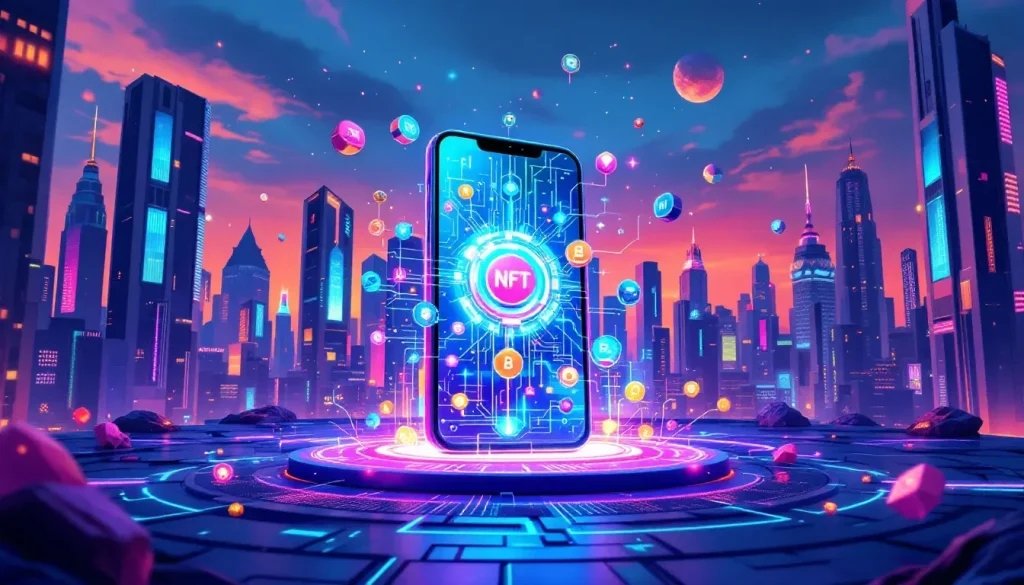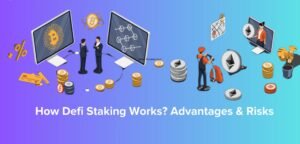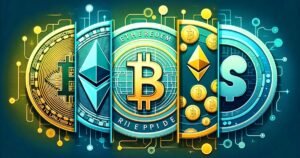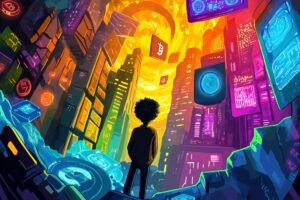In the sizzling Web3 landscape , where digital art and collectibles trade like wildfire, a small startup with $12,000 in seed money built a $2M-valued NFT marketplace in just 10 months. Their platform, a vibrant hub for creators to sell digital art and gamers to trade virtual items, attracted 15,000 users worldwide. This story unveils their journey, offering a clear, beginner-friendly roadmap for anyone—artist, coder, or entrepreneur—to launch their own NFT marketplace. Ready to carve your slice of the crypto pie? Let’s dive in!

What Is an NFT Marketplace?
An NFT marketplace is a blockchain-based platform where users buy, sell, and trade Non-Fungible Tokens (NFTs)—unique digital assets like art, music, or in-game items. Powered by smart contracts on networks like Ethereum, these platforms ensure secure trades with low fees. In 2025, NFT marketplaces handle $45B in transactions annually. This startup’s platform earned $2M by charging 2% fees on trades, connecting artists and gamers globally.
Why build one? It’s a lucrative way to tap into the booming NFT economy with a small budget.
The Startup’s Journey: From $12,000 to $2M
In January 2024, a trio—a graphic designer, a blockchain developer, and a marketing student—with $12,000 from crowdfunding launched their NFT marketplace dream. By November 2024, their platform was valued at $2M with a thriving community. Here’s how they turned ambition into success.
Step 1: Identifying a Market Need
The team saw that existing NFT marketplaces like OpenSea were too complex for new users and charged high fees. They envisioned a user-friendly platform for artists and gamers with 2% fees. They researched competitors on CoinDesk and validated their idea on Reddit NFTs.
- Problem: High fees and clunky interfaces for NFT newbies.
- Solution: A simple, low-fee marketplace for art and gaming NFTs.
- Target: Young creators and casual gamers.
This focus on simplicity won over users.
Step 2: Mastering Blockchain Basics
Only the developer knew blockchain, so the team studied:
- Smart Contracts: Learned Solidity via Solidity Docs.
- NFT Standards: Explored ERC-721 and ERC-1155 on OpenZeppelin.
- Web3 Tools: Watched tutorials on Dapp University.
Three weeks of free resources equipped them to design their platform.
Step 3: Designing the Marketplace
The platform used three smart contracts for efficiency:
1. Auction Contract
Enabled bidding for NFTs, ensuring fair prices.
2. Trade Contract
Handled direct sales and 2% fee collection.
3. User Contract
Managed profiles and ratings for trust.
They hired a Solidity freelancer from Upwork for $4,000 to code and test on Goerli Testnet.

Step 4: Building the Minimum Viable Product (MVP)
The MVP, launched in April 2024, was a basic platform for 200 artists and gamers to trade NFTs. They spent $10,000:
- Development: $6,000 for smart contracts and backend via Alchemy.
- Design: $3,000 for a sleek UI from Fiverr.
- Testing: $1,000 for 400 beta users from Discord.
The MVP generated $20,000 in fees, proving demand.
Step 5: Raising Funds
To scale, they raised $200,000:
- Pitch Deck: Created on Canva, showcasing MVP traction.
- Investors: Secured $130,000 from Web3 VCs on LinkedIn.
- Token Sale: Raised $70,000 via a utility token on Uniswap.
By June 2024, funds fueled marketing and feature enhancements.
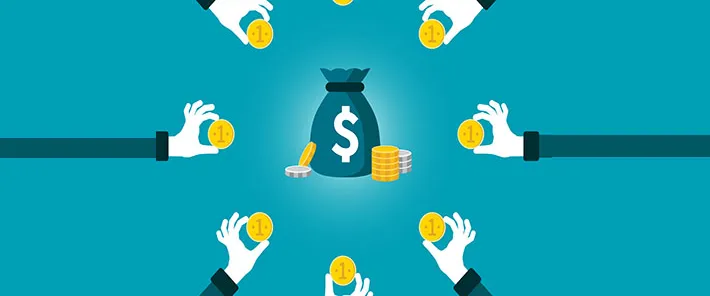
Step 6: Launching and Marketing
The platform launched publicly in July 2024, targeting creators and gamers. Marketing included:
- Social Media: Shared user stories on X, gaining 10,000 followers.
- Partnerships: Collaborated with indie game studios via LinkedIn.
- Community: Built a 4,000-member Discord server with NFT giveaways.
By August 2024, the platform had 5,000 users and $500,000 in transactions.
Step 7: Scaling to $2M
In 2025, NFT adoption surged, with Ethereum at $8,700. The team scaled by:
- New Features: Added NFT rentals and cross-chain support via Chainlink.
- Global Reach: Marketed in Asia and South America via X.
- Security: Audited contracts with CertiK for $5,000.
By November 2024, the platform had 15,000 users and a $2M valuation from fees and token value.
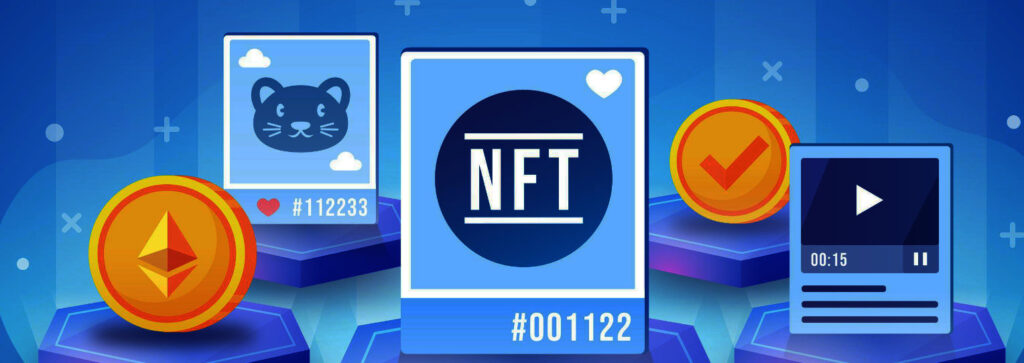
Lessons Learned
Challenges sharpened their approach:
- User Issues: Early bugs slowed trades, fixed after Discord feedback.
- High Fees: Ethereum gas costs hurt, mitigated with layer-2 solutions.
- Regulations: Hired DLA Piper for compliance.
“Every setback was a setup for success,” the team said.
Tips for Beginners in 2025
Ready to build your NFT marketplace? Start here:
- Find a Gap: Spot needs on Dapp.com.
- Keep It Lean: Build an MVP for $8,000-$12,000.
- Engage Users: Grow on Discord and X.
- Secure Code: Audit with CertiK.
Start small, test fast, and scale with trust.
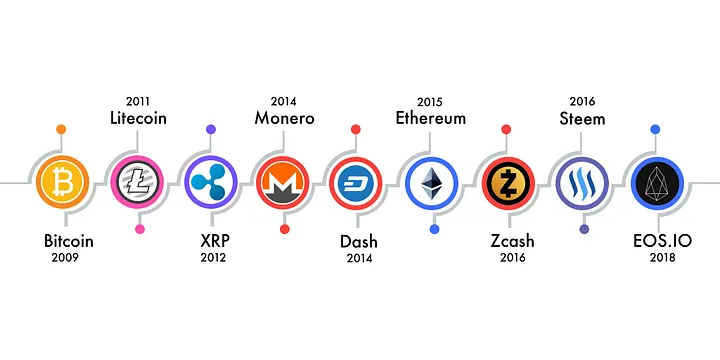
Risks of Building an NFT Marketplace
Creating a marketplace has risks:
- Security: Hacks can drain funds or NFTs.
- Competition: Giants like OpenSea dominate.
- Regulations: Laws may limit token use.
Mitigate with audits, unique features, and legal support.
Resources for Learning More
Want to launch your marketplace? Explore these resources:
- Smart Contracts: OpenZeppelin for templates.
- Web3 Development: Alchemy for tools.
- Market Trends: CoinDesk for insights.
- Communities: Reddit and Discord.
Knowledge powers your platform’s victory.
Conclusion
From a $12,000 dream to a $2M triumph, this startup’s NFT marketplace redefined digital trade in 2025. By solving user pain points, launching a lean MVP, and building a vibrant community, they struck gold. Follow their roadmap, tap into these resources, and create your own NFT marketplace. What’s your Web3 idea? Share it in the comments below!

